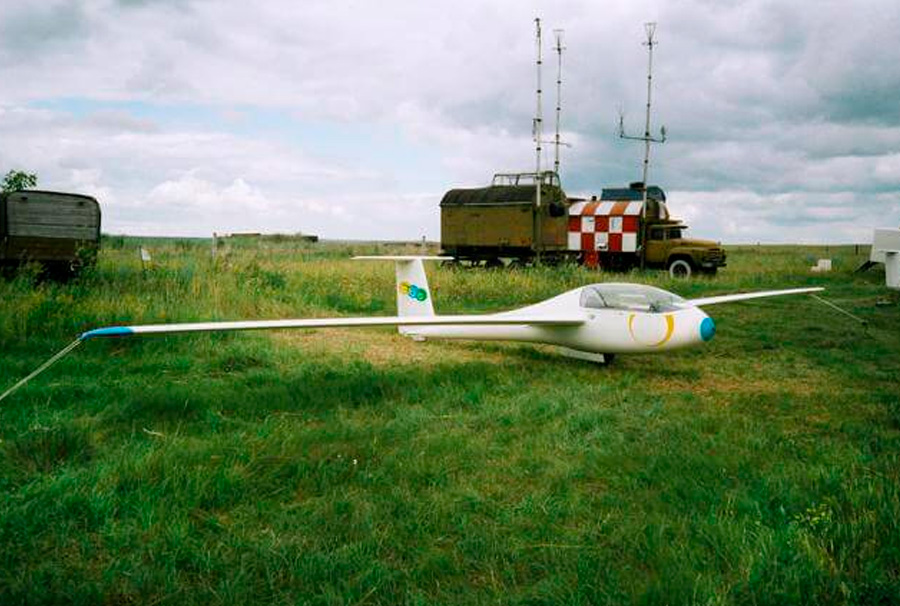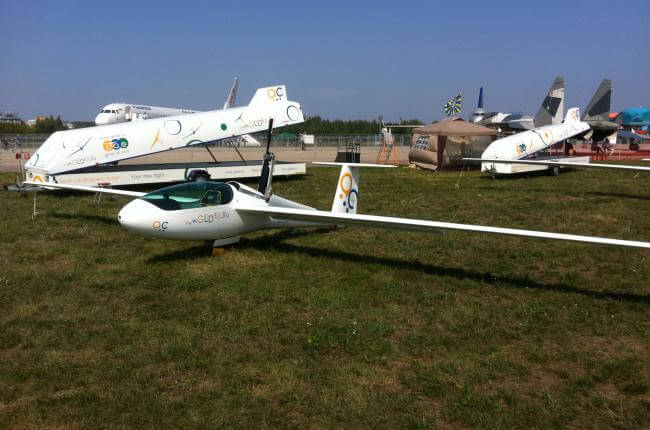- 17.09.2016

Motor-glider AC-5K is a lightweight, single, aircraft, which can be used as a towed gliding glider or taking off and performing a solo flight.
The specific feature of AC-5K is a fuselage-stowed propeller-driven installation. The engine is located inside the fuselage, behind the cockpit.
Motor-glider AC-5K is designed for recreational and training flights.
Fuselage
The fuselage’s got a high safety margin such as "monocoque". The fuselage is made of high-duty aircraft-grade foam plastic and fiberglass fiber fabric that is impregnated with epoxy resin.
Wing

The wing is trapezoidal with 12.6 meter span clearance. The wing has 20.6 elongation point. Standard AN lot profile FX60-157 is used for the wing fabricating. It’s an NLF airfoil which is characterized by a high rate of full-lift capability. They submit high claims to the wing surface waviness to the NLF airfoil. Along the airfoil the surface waviness is less than 0.1 mm (American standard).
Specific wing load is 33 -39 kg / sq.m. depending on the take-off weight. Due to the selected wing elongation, at the speed of 90 km / h it takes the glider no more than 3,5 seconds to bank to bank rolls from +45˚ to -45˚ during the spiral.
The connection in the steering system centre of speed brakes and ailerons is realized with lateral control rods system.
Undercarriage
AC-7K glider undercarriage design consists of a main retractable rim and a rotating clear tail wheel . The main rim is tube-typed with a diameter of 360 mm. Pneumatic-hydraulic shock absorber damping is used for it. Ball bearings are applied in rim design.
Oil hydraulic drill actuates drum-type brake unit. Decelerating is made with bicycle-type handle that is located on the control stick.
Tail wheel is non-retractable with a diameter 220 mm, rotating clear.
Cabin
Cockpit canopy consists of two parts. Windscreen panel is attached fixedly. Central canopy is opened to the right.
A glider cockpit allows a comfortable embarkation of an athletically built pilot up to 190 cm tall. Cabin visibility is 300 degrees minimum. Seatback and directional control pedal are set up to length.
Canopy emergency release is actuated with two red handles that are located on both bottom sides of the canopy line.
The cockpit panel’s got a complete list of standard flight navigation instruments. There is some more space for component devices. VHF antenna is set up in a tail fin.
There is a standard four-point harness.
Power generator
- Power generator Simonini Victor 1, two-stroke, spark-ignition.
- Maximum power is 32.3 kW / 44 hp.
- Cycles per minute at the engine topping power is 6200 rev / min.
- Air cooling system.
- Fuel mixture is used: gasoline AI-95 not lower than Euro-3 and synthetic oil for two-stroke engines. Gasoline-oil mixture ratio is 1/33.
- Starting from the electric starter.
- Electric network potential difference is 12 volts.
Airplane propeller
Two-bladed wooden adjustable pitch propeller.